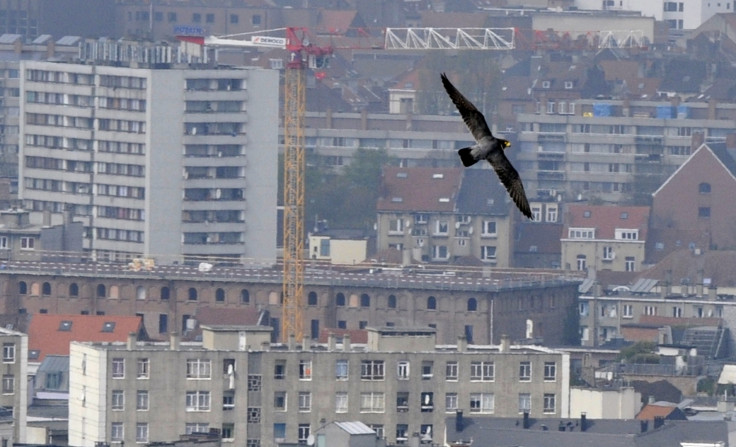US Air Force turns to falcons to take on rogue drones
Oxford University researchers taking attack cues from Falcons to take down rogue drones.

Oxford University researchers are taking attack strategies from falcons to develop drones capable of bringing down rogue UAVs in restricted airspace.
As the threat of attacks from armed and commercial drones continues to increase, zoologists from Oxford started exploring peregrine falcons and the attack technique these aerial predators use to "intercept moving targets that don't want to be caught".
The effort, launched with an initial funding from the US Air Force, saw them fly as many as 55 falcons with an experienced falconer and a qualified drone pilot.
They fitted the raptors with video cameras and GPS receivers and studied how they attack dummy preys thrown by the falconer or flown on a drone.
Interestingly, the eye-view of the falcons' movement and trajectory revealed they follow a technique which appears a lot similar to the method used in visually-guided missiles, such as the AIM-9 Sidewinder heat-seeking missile from the 1950s, according to a Bloomberg report.
With this approach, dubbed proportion navigation, an attacker can take down its target as long as it remains in its line of sight. It doesn't even need information about the speed or distance of its target.
However, the falcons' technique had a slight modification. Unlike missiles, they tweaked their angle of attack to compensate for low speed, something which could be used to design visually-guided drones that could take down "rogue" drones flying in the vicinity of airports and prisons.
"Falcons are classic aerial predators, synonymous with agility and speed," says Graham Taylor, the lead author of the study. "Remarkably, it turns out that they do this in a similar way to most guided missiles."
Calling this "an elegant convergence", Taylor told Bloomberg that the application of the technique for drone defence "emerged naturally through the course of the study".
"Our next step is to apply this research to designing a new kind of visually guided drone, able to remove rogue drones safely from the vicinity of airports, prisons and other no-fly zones." So far, there's no word on when these drones would be developed or deployed for the job.
Over the past few years, the threat of hostile drone attacks has increased significantly. People have used unmanned UAVs to fly drugs or phones into prisons, and as many as 99 near misses with flights have also been reported in the UK alone.
The study is published in the journal PNAS.





















